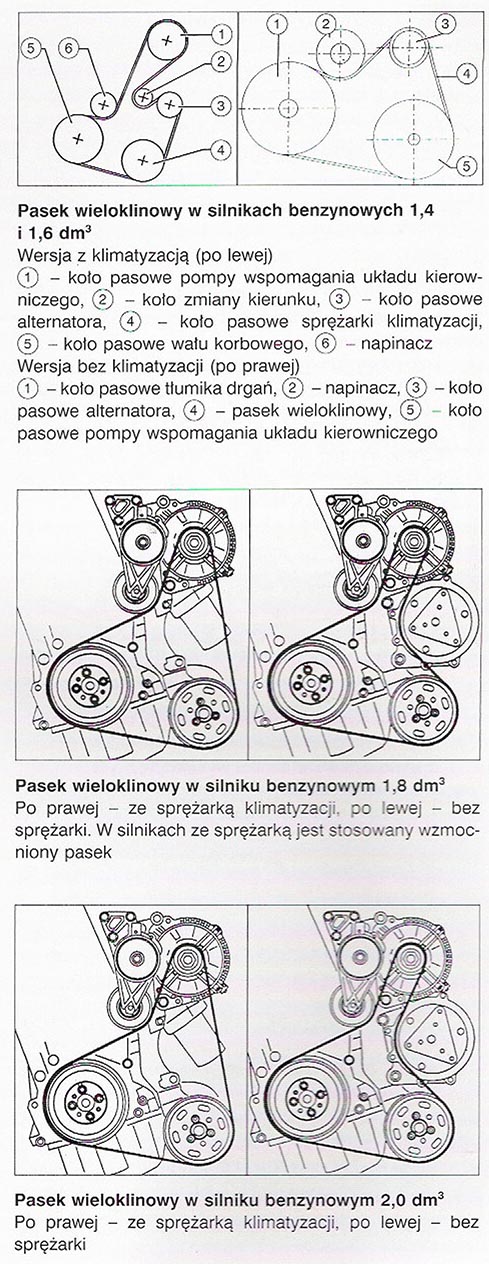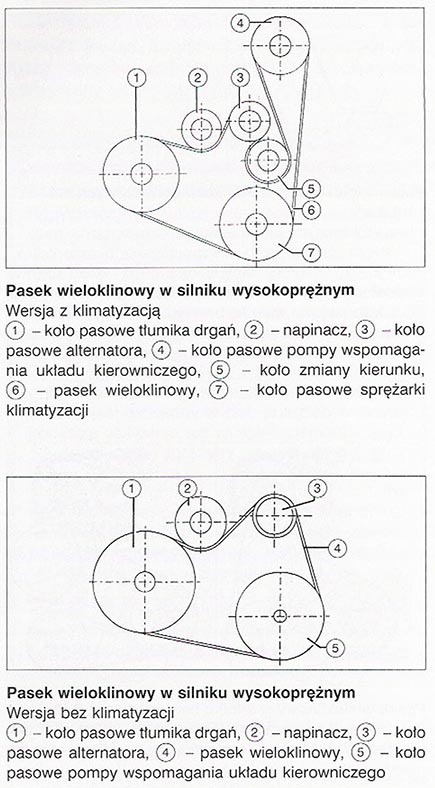 Checking the condition of the poly V-belt.
Checking the condition of the poly V-belt.
Once a simple V-belt has become a wider, much longer multi-ribbed V-belt. It drives the alternator, power steering pump, radiator fan i (if present) air conditioning compressor.
At first glance it seems, that the belt, routed through a very complicated path, is an integral part of the engine. The serpentine belt is designed to match the engine type. A broken belt means a big complication for the engine, therefore it is extremely durable.
Mandatory belt replacement after each 120 000 kilometers are provided for engines only 1,8 Turbo. It is not compulsory to check the condition of the belt, but it certainly won't hurt him.
Next steps:
1. Check the outside of the belt.
2. Turn the crankshaft several times. This will allow you to see the entire strip. Most often, the bar has only one, but deep damage. To view them, slide the damaged spot over the pulley.
3. Replace the belt when damaged as follows:
■ uneven wear on the side of the belt,
■ a porous or ragged surface of the strip,
■ broken belt.

Checking the belt tension
A belt tensioned too weakly will slide and transmit too little power (or not at all). The belt-driven components will malfunction. Excessive belt tension is also harmful. It places an unnecessary stress on the component bearings.
The engines of Golf and Bora cars feature automatic belt tension adjustment. The tightness is checked as follows.
Press very hard on the stretched belt. It must give way under pressure and the tensioner pulley should swing sideways. When you release the pressure, the pulley should return to its starting position and tighten the belt. If the belt starts to hang loose, this indicates that the tensioner is damaged or the multi-wedge pin locking the tensioner has not been pulled out.
